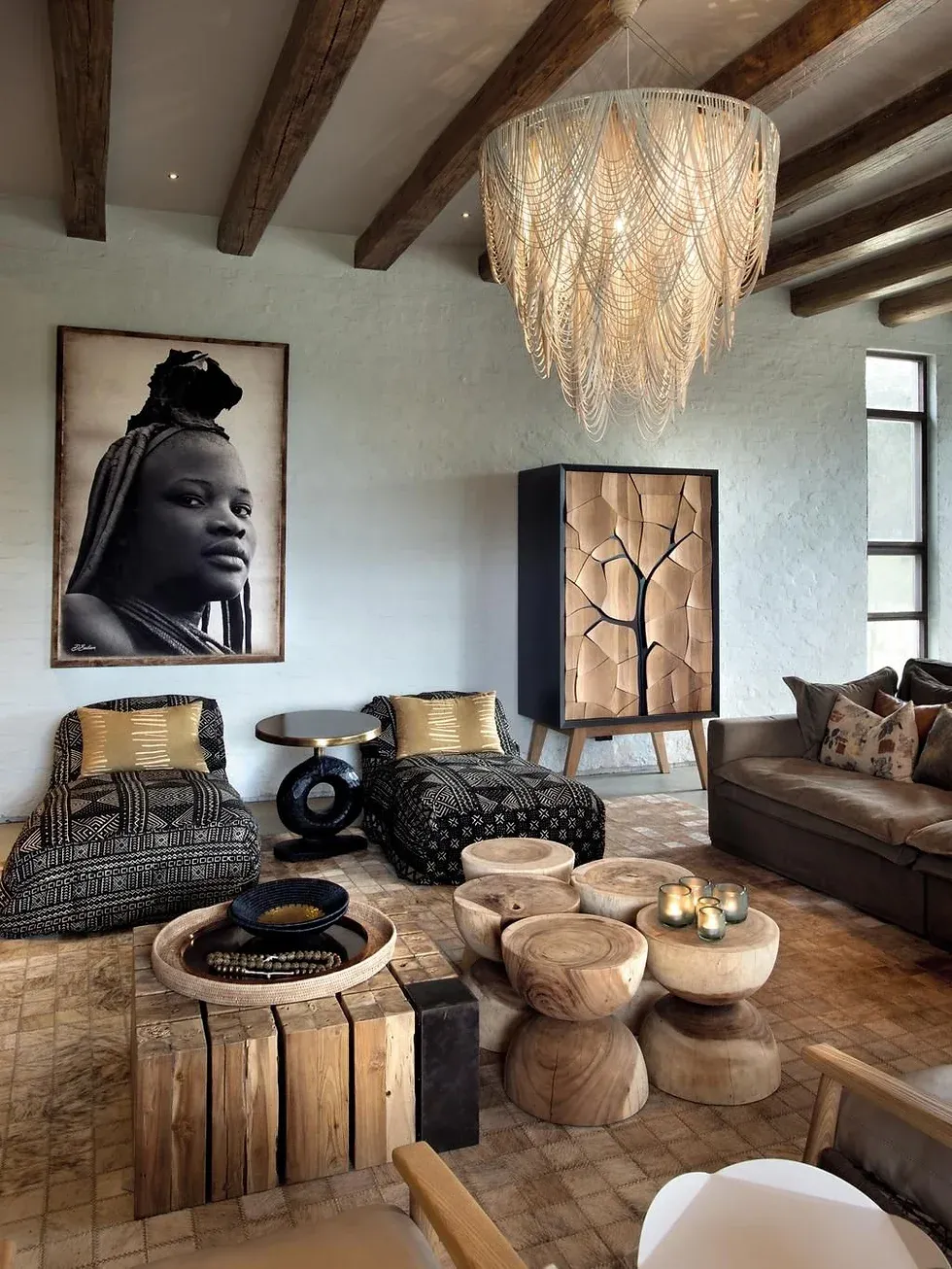A Celebration of Color, Texture, and Tradition: Exploring African Interior Design
African interior design is a vibrant fusion of rich cultural heritage, bold aesthetics, and an appreciation for nature's beauty. It's a style that transcends mere decoration, weaving a tapestry of stories, traditions, and craftsmanship that inspires and captivates.
Embrace the Vibrant Palette:
African design embraces a kaleidoscope of colors, drawing inspiration from the continent's diverse landscapes and vibrant cultures. Earthy tones like ochre, terracotta, and burnt orange evoke the vast savannas, while jewel tones like emerald green, sapphire blue, and ruby red reflect the richness of Africa's flora and fauna.
Play with Texture and Pattern:
Texture is a defining element of African design. Woven textiles like kente cloth, featuring intricate geometric patterns, are often used for upholstery, throws, or wall hangings. Natural materials like wood, leather, and stone add warmth and depth, while handcrafted baskets, beaded ornaments, and carved masks bring a sense of cultural richness.
Incorporate Traditional Elements:
African design is deeply rooted in tradition. Incorporating traditional motifs like Adinkra symbols, representing proverbs and philosophies, adds cultural depth. Wooden masks, hand-carved statues, and tribal artwork can serve as powerful focal points, adding a sense of history and storytelling.
Embrace Nature's Influence:
Nature plays a significant role in African design. Natural materials like wood, bamboo, and rattan are used extensively in furniture and decor. Incorporating plants like succulents, ferns, and tropical flowers adds life and vibrancy, bringing the outdoors in.
Crafting a Unique Space:
Here are some tips for incorporating African design elements into your home:
* Color Palette: Choose a color palette that reflects the warmth and vibrancy of Africa.
* Textiles: Use bold fabrics with African patterns or handcrafted textiles like kente cloth.
* Furniture: Opt for furniture with organic shapes and natural materials like wood or bamboo.
* Art and Accessories: Incorporate African artwork, masks, sculptures, or handcrafted ornaments.
* Lighting: Use natural light where possible, and incorporate warm, inviting lighting fixtures.
Beyond Style, a Celebration of Culture:
African interior design is more than just a trend; it's a celebration of heritage and an appreciation for the beauty and diversity of the continent. It's a style that invites you to embrace cultural richness, celebrate nature's artistry, and create a space that reflects your own unique personality.

















Comments
Post a Comment